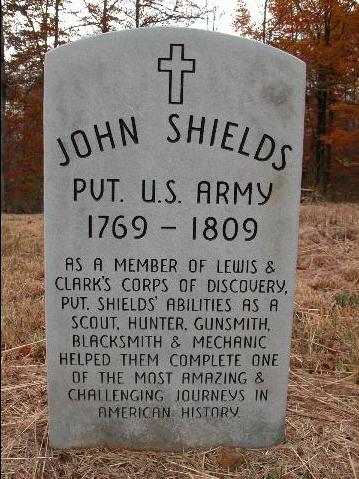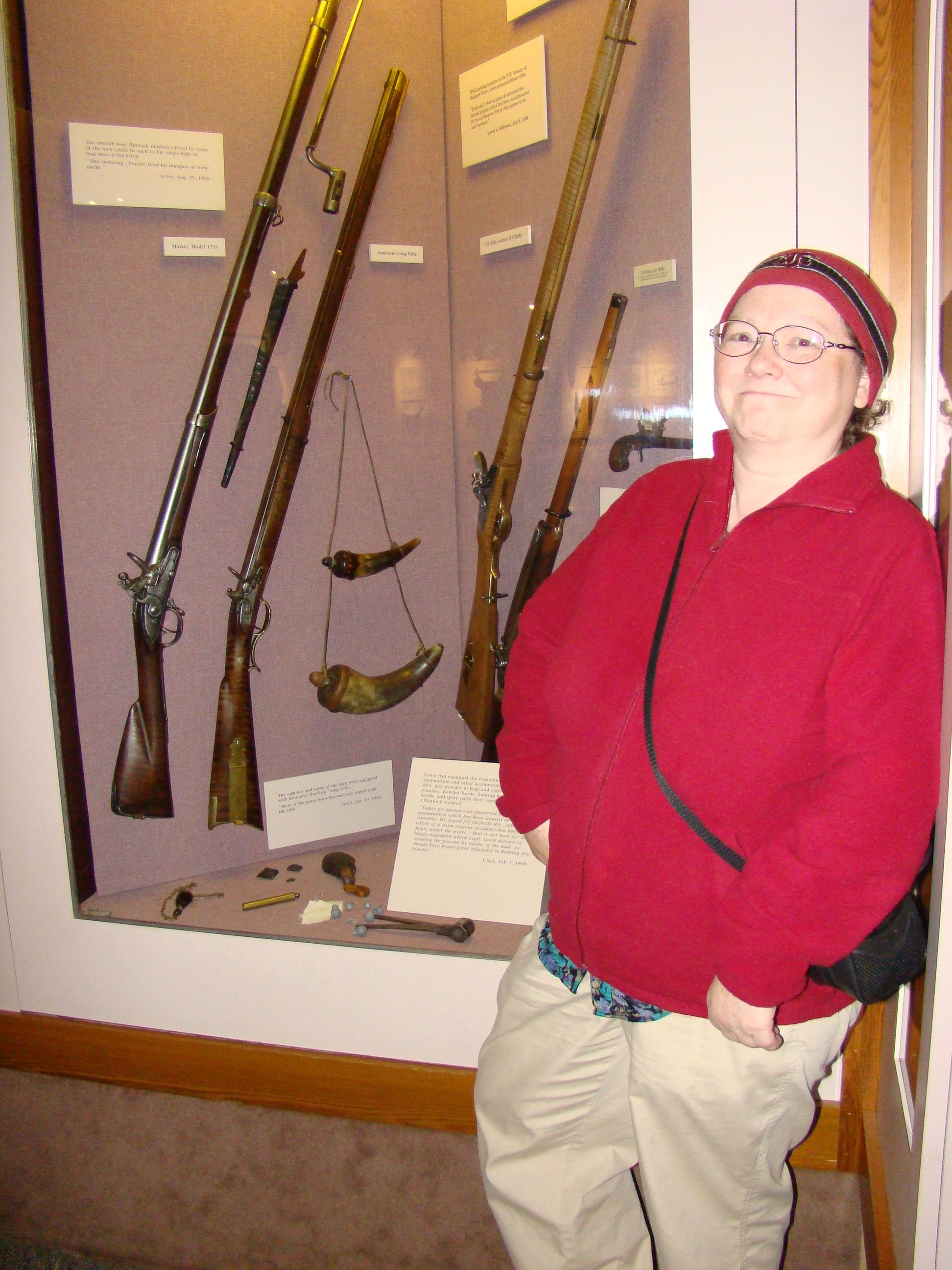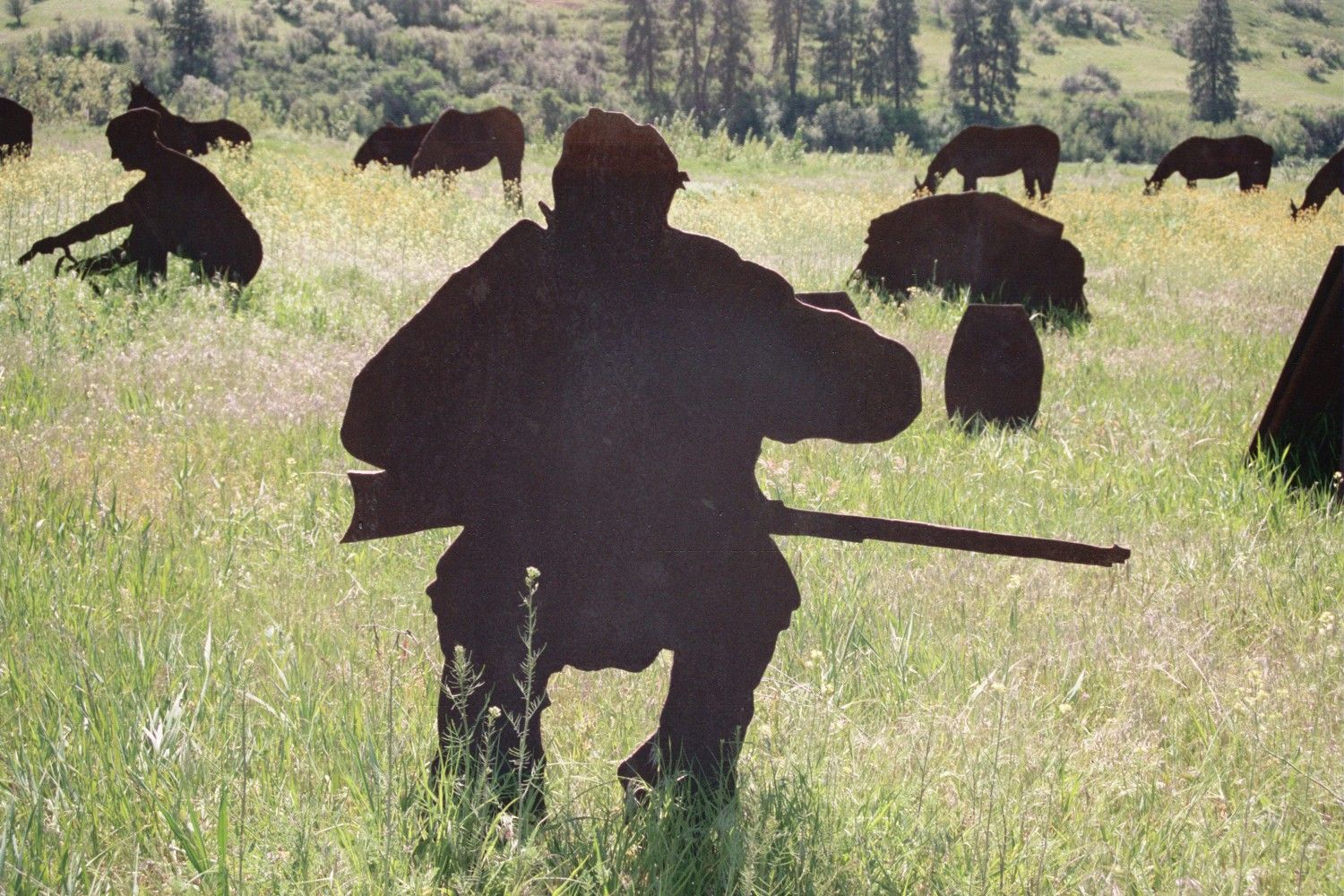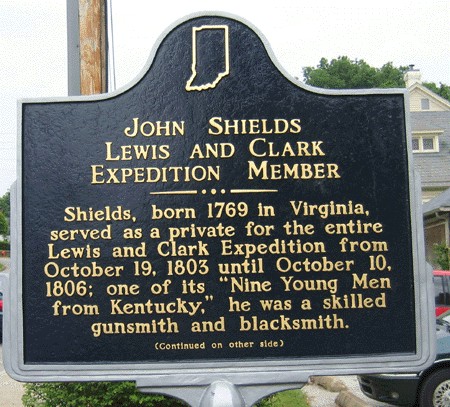Private who served on the Lewis and Clark Expedition. He served as the gunsmith, keeping their firearms in working order.
Note: The following is copied verbatim from family history books. John Shields's date of death has been established as December 1809 in Harrison County in southern Indiana, so some of the dates below are obviously incorrect but possibly the material is otherwise factual. The marker may well be considered a cenotaph inscription. Some Shields family members are buried in the Little Flock Baptist Church Cemetery but John Shields's burial there is only a matter of local tradition and theories. The marker was placed in 2002 or 2003 to honor Shields and his burial there is unproven.
JOHN SHIELDS was born in 1769. In 1784 he went with the family to live in Shields Fort in Tennessee. Later he ran a mill and blacksmith shop for Samuel Wilson. Of the "Ten Brothers," he has the greatest claim to fame and an honored place in history. He was one of the little band of 29 men on the Lewis & Clark Expedition in 1804. He was the Scout and Gunsmith on that extraordinary adventure. His ingenuity at the forge, in making knives, hatchets and trinkets for trading with the Mandan Indians near the present city of Mandan, N.D., and his diplomatic skill in treating with them, saved the Expedition from starvation and massacre. He walked, scouting for hostile Indians, all the way from the south of the Kansas River to the headwaters of the Missouri, thence down the Columbia to the Pacific Ocean, being one of the first, if not the first white man to make that perilous trans-continental journey. He is given highest praise in the Official Reports of both Meriwether Lewis and William Clark. On returning from the Far West he spent a year trapping with Daniel Boone in Missouri and another year with Squire Boone in Indiana. The fatigue, exposure, starvation and other hardships of his long trip with Lewis & Clark ruined his health, and that of most of those on the Expedition. Efforts to secure relief for them from the Government failed. John Shields spent his last years as an invalid and pauper among his relatives and died comparatively young, about 1815. He is buried in a rural cemetery in an unmarked grave near Athens, Tenn. His only child, Jennie, married her cousin, John Tipton.
From "Three Kansas Pioneer Families: Stalker-Shields-Martin" by John A. Shields, privately published in a limited edition of 200 copies, May, 1949.
From another family history book:
What became of John Shields we do not know. For a time at least, after his return from the west, he lived in southern Indiana, but later lived in Sevier County, Tennessee, where he probably was buried.
Shortly following the War of 1812 we find a record of his having made repeated efforts to gain some recognition for his immensely valuable services to his country. His long trip, together with the fatigue and exposure incident to it, ruined his health, and it is said that he wore his life away in Washington in a vain effort to get Congress to relieve his poverty by making some provision for him in return for what he had done. No reward was ever given him, however, during his lifetime, and now, "the fitful fever of life being over, he sleeps well," but there is not a stone to mark the place. Perhaps somewhere in Indiana, or in the mountains of eastern Tennessee, or in Virginia, where he was born, nobody knows just where, his remains repose. He is, by the government for which he did so much, left, so far as it is concerned, without a monument to mark his resting place, or a line of record to indicate where it might be found.
From "The Shields Family" by John A. Shields, privately published December, 1917, reprinted March 1, 2017.
Private who served on the Lewis and Clark Expedition. He served as the gunsmith, keeping their firearms in working order.
Note: The following is copied verbatim from family history books. John Shields's date of death has been established as December 1809 in Harrison County in southern Indiana, so some of the dates below are obviously incorrect but possibly the material is otherwise factual. The marker may well be considered a cenotaph inscription. Some Shields family members are buried in the Little Flock Baptist Church Cemetery but John Shields's burial there is only a matter of local tradition and theories. The marker was placed in 2002 or 2003 to honor Shields and his burial there is unproven.
JOHN SHIELDS was born in 1769. In 1784 he went with the family to live in Shields Fort in Tennessee. Later he ran a mill and blacksmith shop for Samuel Wilson. Of the "Ten Brothers," he has the greatest claim to fame and an honored place in history. He was one of the little band of 29 men on the Lewis & Clark Expedition in 1804. He was the Scout and Gunsmith on that extraordinary adventure. His ingenuity at the forge, in making knives, hatchets and trinkets for trading with the Mandan Indians near the present city of Mandan, N.D., and his diplomatic skill in treating with them, saved the Expedition from starvation and massacre. He walked, scouting for hostile Indians, all the way from the south of the Kansas River to the headwaters of the Missouri, thence down the Columbia to the Pacific Ocean, being one of the first, if not the first white man to make that perilous trans-continental journey. He is given highest praise in the Official Reports of both Meriwether Lewis and William Clark. On returning from the Far West he spent a year trapping with Daniel Boone in Missouri and another year with Squire Boone in Indiana. The fatigue, exposure, starvation and other hardships of his long trip with Lewis & Clark ruined his health, and that of most of those on the Expedition. Efforts to secure relief for them from the Government failed. John Shields spent his last years as an invalid and pauper among his relatives and died comparatively young, about 1815. He is buried in a rural cemetery in an unmarked grave near Athens, Tenn. His only child, Jennie, married her cousin, John Tipton.
From "Three Kansas Pioneer Families: Stalker-Shields-Martin" by John A. Shields, privately published in a limited edition of 200 copies, May, 1949.
From another family history book:
What became of John Shields we do not know. For a time at least, after his return from the west, he lived in southern Indiana, but later lived in Sevier County, Tennessee, where he probably was buried.
Shortly following the War of 1812 we find a record of his having made repeated efforts to gain some recognition for his immensely valuable services to his country. His long trip, together with the fatigue and exposure incident to it, ruined his health, and it is said that he wore his life away in Washington in a vain effort to get Congress to relieve his poverty by making some provision for him in return for what he had done. No reward was ever given him, however, during his lifetime, and now, "the fitful fever of life being over, he sleeps well," but there is not a stone to mark the place. Perhaps somewhere in Indiana, or in the mountains of eastern Tennessee, or in Virginia, where he was born, nobody knows just where, his remains repose. He is, by the government for which he did so much, left, so far as it is concerned, without a monument to mark his resting place, or a line of record to indicate where it might be found.
From "The Shields Family" by John A. Shields, privately published December, 1917, reprinted March 1, 2017.
Family Members
Advertisement
Records on Ancestry
Sponsored by Ancestry
Advertisement
















